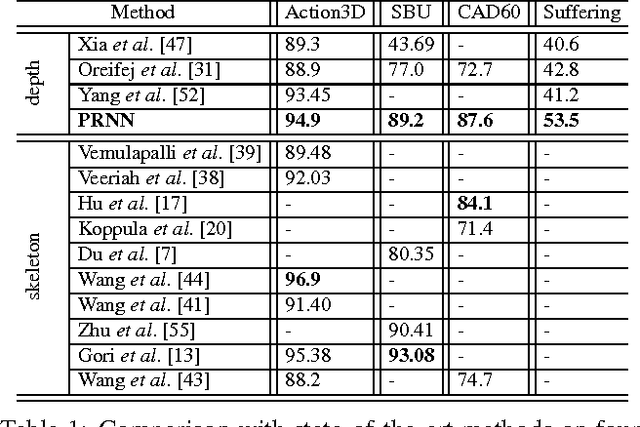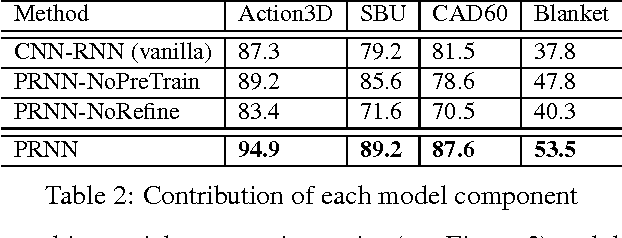Learning and Refining of Privileged Information-based RNNs for Action Recognition from Depth Sequences
Paper and Code
Aug 08, 2017



Existing RNN-based approaches for action recognition from depth sequences require either skeleton joints or hand-crafted depth features as inputs. An end-to-end manner, mapping from raw depth maps to action classes, is non-trivial to design due to the fact that: 1) single channel map lacks texture thus weakens the discriminative power; 2) relatively small set of depth training data. To address these challenges, we propose to learn an RNN driven by privileged information (PI) in three-steps: An encoder is pre-trained to learn a joint embedding of depth appearance and PI (i.e. skeleton joints). The learned embedding layers are then tuned in the learning step, aiming to optimize the network by exploiting PI in a form of multi-task loss. However, exploiting PI as a secondary task provides little help to improve the performance of a primary task (i.e. classification) due to the gap between them. Finally, a bridging matrix is defined to connect two tasks by discovering latent PI in the refining step. Our PI-based classification loss maintains a consistency between latent PI and predicted distribution. The latent PI and network are iteratively estimated and updated in an expectation-maximization procedure. The proposed learning process provides greater discriminative power to model subtle depth difference, while helping avoid overfitting the scarcer training data. Our experiments show significant performance gains over state-of-the-art methods on three public benchmark datasets and our newly collected Blanket dataset.
 Add to Chrome
Add to Chrome Add to Firefox
Add to Firefox Add to Edge
Add to Edge